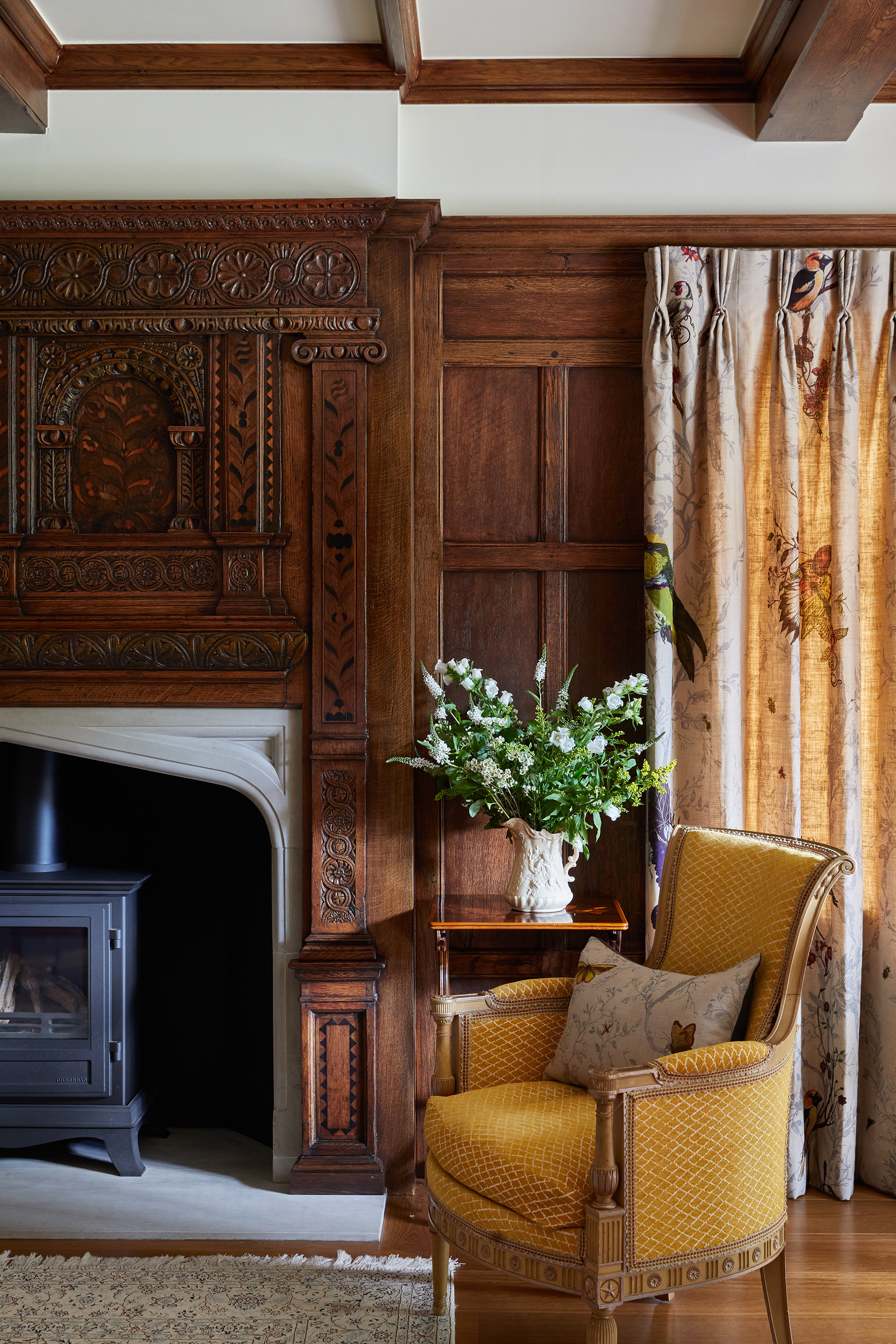
From its humble origins of providing insulation to quickly becoming a highly decorative feature, dark wood paneling is one of the most striking features of period and contemporary homes alike. There is no better way to add character to a room, which is why it’s important to make the most of original paneling or, where appropriate, add an authentic new design, much like Joanna and Chip Gaines have done in their 1900s Cottonland Castle renovation in the heart of Waco, Texas.
Oak wood wall paneling may be a perennial favorite, but nothing beats dark wood timber for creating an impressive setting. Textured timbers, such as walnut, teak and zebrano, look sleek and sophisticated and work extremely well with a neutral color palette and plenty of textural elements. A dark-wood finish oozes quality and traditional joinery-making skills.
The final result is a true departure from the modern farmhouse style that Chip and Joanna have become known for (not one shiplap wall in sight). Instead, dark wood takes us back to a simpler time, but what do experts think?
'Many of the rooms that we design include paneling, and dark wood has had a sudden resurgence in popularity,' says Bruce Hodgson, founder & creative director, Artichoke. 'It has aesthetic as well as practical benefits. Often, you might think of paneling in the library of a grand country house, but it has more informal uses, too.'
'Historically, the working areas of houses would often have wainscotting – a simple form of tongue-and-groove paneling – to protect the walls and, today, the same approach can be used in any area of the home. Paneling can also be a useful way of straightening up wonky walls or hiding essential services such as pipes and cables.'

Dark wood paneling is a useful way of introducing warmth and character to a room – there is something cozy about being surrounded by wood. Panel moldings are used to create shadow and catch the light, adding a definition that is particularly important if your home is on the smaller or narrow side.
In a contemporary environment, dark wood paneling is an excellent way of framing large, flat surfaces. Post-war paneling, for example, was typically slightly flatter and less ornate than previous styles, and relied more heavily on the grain in the wood as a decorative detail.
'When it comes to choosing traditional dark wood paneling for your home, there are many styles available to suit the age of the house and personal taste,' says Brian Purnell, owner, of Distinctive Country Furniture. 'Some incorporate a richer effect, such as hand-carved friezes and pilasters, others have a traditional aged and polished finish, and some, such as the Tudor linenfold, are highly decorative.'
'It is entirely personal, but a typical approach would be to match the style of the paneling to the period of a house, or the look that you wish to emulate.' Here, the Gaineses delved into the local archives to learn about the original design (a process thoroughly documented on Fixer Upper: The Castle, a six-episode series that aired on Magnolia Network in the fall of 2022). The home itself, rather than any interior design trends or preconceived ideas, led the way.
While we expect to see this style and color of paneling surge in popularity in 2024, there are a few things to bear in mind before similarly remodeling your entryway.
If you are opting for traditional hardwood paneling, it is essential to commit to looking after it correctly. The very hot and dry atmospheres found in modern homes can cause damage, so it is worth trying to mitigate that by either keeping the heating set at a lower temperature in the paneled rooms or by introducing some humidity to the atmosphere. Remember to wax the wood once a year with beeswax polish, too.







